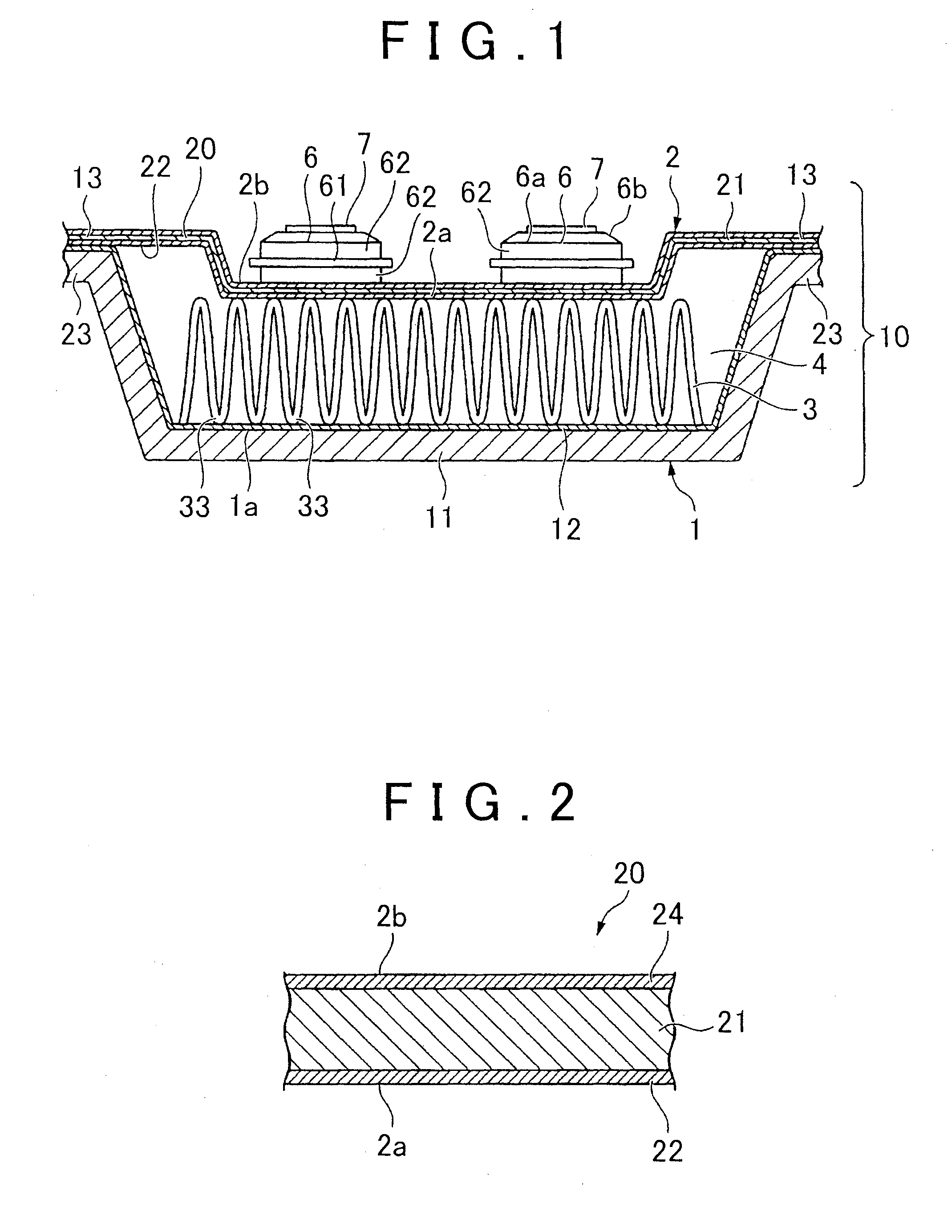Clad material for cooler, cooler for heat-generating device, and method of producing cooler for heat-generating device
- Summary
- Abstract
- Description
- Claims
- Application Information
AI Technical Summary
Benefits of technology
Problems solved by technology
Method used
Image
Examples
first embodiment
[0038]A first embodiment of a cooler for a heat-generating device, which uses a clad material for a cooler according to the invention, will be described first. FIG. 1 is a schematic cross-sectional diagram that shows the first embodiment of a cooler for a heat-generating device, which uses a clad material for a cooler according to the invention. FIG. 2 is a schematic cross-sectional diagram that shows an example of a clad material for a cooler, which is used as the material of the top sheet in the cooler for a heat-generating device shown in FIG. 1.
[0039]The cooler 10 for a heat-generating device (referred to below simply as a “cooler”), shown in FIG. 1, is constructed by stacking a bottom sheet 1, which has a shape in which a plurality of sections processed to have a trough-shaped cross section are connected in the lateral direction, an inner fin 3, which resides in the trough-shaped section of the bottom sheet 1, and a top sheet 2 in the given sequence and, using the brazing fille...
second embodiment
The Second Embodiment
[0088]A second embodiment of a cooler for a heat-generating device (a cooler for a heat-generating device according to the invention) that uses another example of a clad material for a cooler according to the invention. Those structures in the second embodiment that are similar to those of the previously described first embodiment will not be described in detail again. The cooler for a heat-generating device of the second embodiment is similar to the first embodiment, except that there is a change in the structure of the clad material 20 for a cooler used as the material of the top sheet 2.
[0089]In this embodiment, the clad material for a cooler has a sacrificial material layer in place of the first brazing filler metal layer 22, while its other elements, i.e., the composition of the core material and the brazing filler metal layer (the second brazing filler metal layer 24 in the first embodiment), the finish rolling ratio, and the pre- and post-brazing properti...
examples 1-8
, Comparative Examples 1-5: inner fin C (refer to Table 3)
PUM
| Property | Measurement | Unit |
|---|---|---|
| Temperature | aaaaa | aaaaa |
| Temperature | aaaaa | aaaaa |
| Temperature | aaaaa | aaaaa |
Abstract
Description
Claims
Application Information
 Login to View More
Login to View More - R&D
- Intellectual Property
- Life Sciences
- Materials
- Tech Scout
- Unparalleled Data Quality
- Higher Quality Content
- 60% Fewer Hallucinations
Browse by: Latest US Patents, China's latest patents, Technical Efficacy Thesaurus, Application Domain, Technology Topic, Popular Technical Reports.
© 2025 PatSnap. All rights reserved.Legal|Privacy policy|Modern Slavery Act Transparency Statement|Sitemap|About US| Contact US: help@patsnap.com


